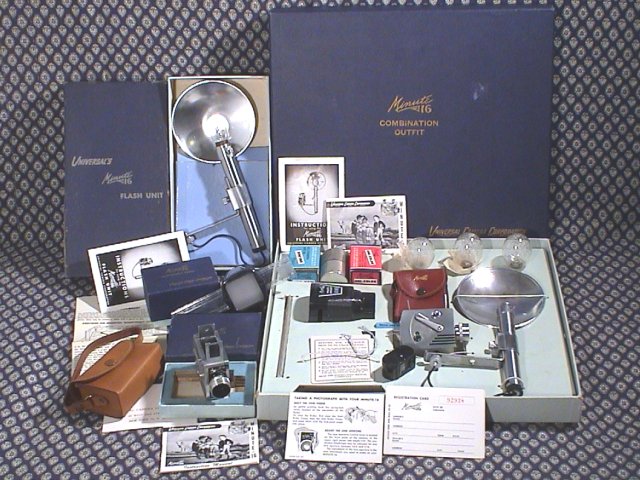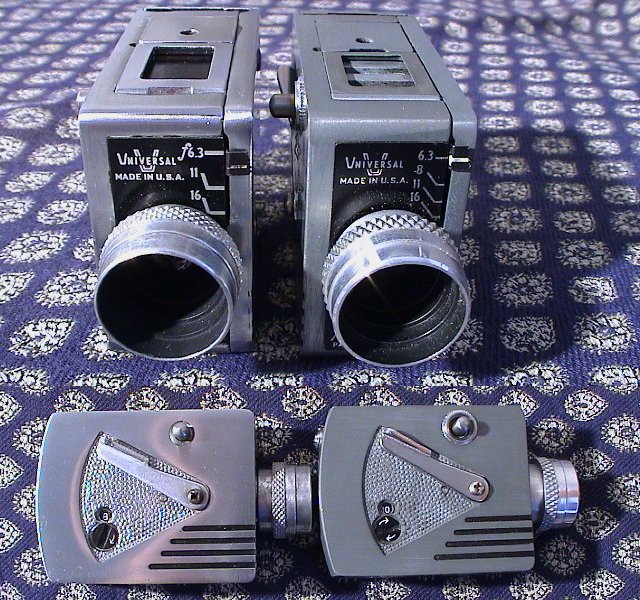Universal Camera Co had achieved great success with the range of cameras starting with the Univex A. The 39 cent camera sold nearly 3 million in 1934. After the war they hoped to repeat the success with a subminiature camera as well as to maintain a tight control over the processing and available film. In 1949 they introduced the Minute 16 (as in small not 60 seconds), designed to resemble a miniature movie camera, including a pop up sports viewfinder. This venture is credited with making the firm bankrupt with over 2 million US dollars spent on research and development.
It is smaller than the Whittaker Micro 16 and also made of metal but uses a plastic double cassette giving 12 frames on a roll. The back of the cassette has a little protection to assist in removing the cassette. The front of the cassette has an open window of 12x15mm,
The Minute 16 has a meniscus f6.3 lens with sliding Waterhouse1 stops and marked aperture on the front of f6.3, f11 and f16. The later version included f8. It is fitted with a sector shutter with a single speed of 1/60 s.
The film advance is by a lever on the slid of the camera.
It was sold in small blue boxes, case separate or as a kit including the flash with viewer, negative holders, spare bulbs and film. There was also a tripod with squared off legs.
Results are even worse than from the Micro 16 and it suffers from film jamming and the shutter is unreliable. Samples today often don't work, although otherwise in excellent condition.

The photograph below shows the two versions of the Minute 16 camera. The front has f8 marked as well as f6.3, 11 and 16. The view finder and shutter release are also slightly different.

Manuals Ebay *2002/07/24 5USD
Links
Details on how to load a Minute 16 cartridge can be found at http://www.grodgers.com/minute16.htm